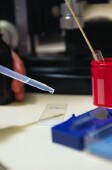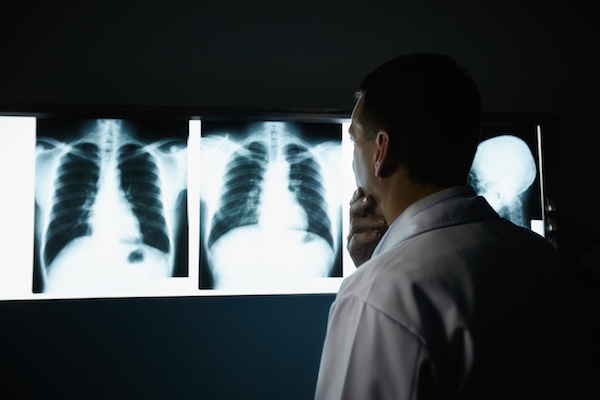
WEDNESDAY, Jan. 27 (HealthDay News) — Scientists say they have fashioned a new test that can detect lung cancer simply on the basis of a tumor-causing change in the odor of bodily fluids.
The finding is so far based solely on work with mice, but follow-up studies are underway to see if this novel approach could aid in the early diagnosis of lung cancer in humans.
“But this work already proves, at least in principle, that tumors — in this case lung cancer tumors in mice — result in a change in odors that ought to be useful for diagnostic purposes,” observed senior study author Gary K. Beauchamp, a biologist at Monell Chemical Senses Center in Philadelphia.
Beauchamp and his colleagues published their findings online in the January issue of PLoS One.
The authors noted that lung cancer is the leading cause of cancer-related deaths worldwide. According to the American Cancer Society, nearly 220,000 men and women were diagnosed with lung cancer in the United States in 2009. Nearly 160,000 Americans died from the disease that same year.
Researchers have long sought to expand the ways they could screen for lung cancer at as early a stage as possible, given that the disease often develops in the absence of easily identifiable symptoms.
Although previous anecdotal reports have indicated that tumor-provoked odor changes might signal the presence of cancer, the research team noted that this prospect has never conclusively been proven.
Setting out to do just that, Beauchamp and his associates devised what they described as a “rigorously controlled animal model” to isolate smell biomarkers in the urine of mice that develop as the result of lung cancer-induced organic compound changes occurring at the molecular level.
On one front, the researchers trained so-called “sensor mice” to recognize the particular scent found in the urine of mice that had developed lung cancer tumors. These mice were ultimately able to tell the difference between mice with lung cancer and healthy mice.
On another front, the authors found that tumor-triggered organic compound changes were both significant and readily identifiable, as a result of chemical comparisons between urine taken from healthy mice and cancer-ridden mice, respectively.
Specifically, the comparisons revealed that odor shifts in urine taken from mice with cancer were often linked to a drop in the levels of particular organic compounds. While Beauchamp described this observation as “surprising,” he confirmed that “although an increase in a compound can change odor, a decrease can change it just as much.”
In turn, the researchers developed “chemical profiles” designed to classify the biomarker compounds of mouse urine as either tumor-related or not. Ultimately, the team found that their classification technique was able to correctly screen for lung cancer in mice 47 out of 50 times.
“But of course the major caveat here is what’s the relevance to human cancer,” cautioned Beauchamp. “This work certainly doesn’t prove that this diagnostic approach will be useful in humans, so we don’t truly know the answer to that question yet as we don’t know how our current work with patients is going to turn out. So I am very hard-pressed to answer how soon this kind of diagnosis could be available for patients and physicians,” he explained.
“But I would think we should know within a year or so whether or not this is something we should go forward with,” he added. “Although in any case, we don’t foresee this as supplanting other diagnostic methods. Rather, we think — if it works — this could be useful as an additional available tool.”
Dr. Roy Herbst, chief of the section of thoracic medical oncology in the department of Thoracic/Head and Neck Medical Oncology at the M.D Anderson Cancer Center in Houston, described the effort to expand diagnosis options as “huge.”
“The potential for this to help with diagnoses is enormous,” he said. “It’s still just in mice, so it’s still early, but I think it really gets to the whole idea that we’re using modern tools to get a grasp on these dangerous cancers. And if this works it would give us a way to better understand and better identify those who might have lung cancer earlier, and then to treat the disease, and guide the way we treat it, in more effective ways.”
More information
For more on cancer detection and diagnostics, visit the American Cancer Society.

